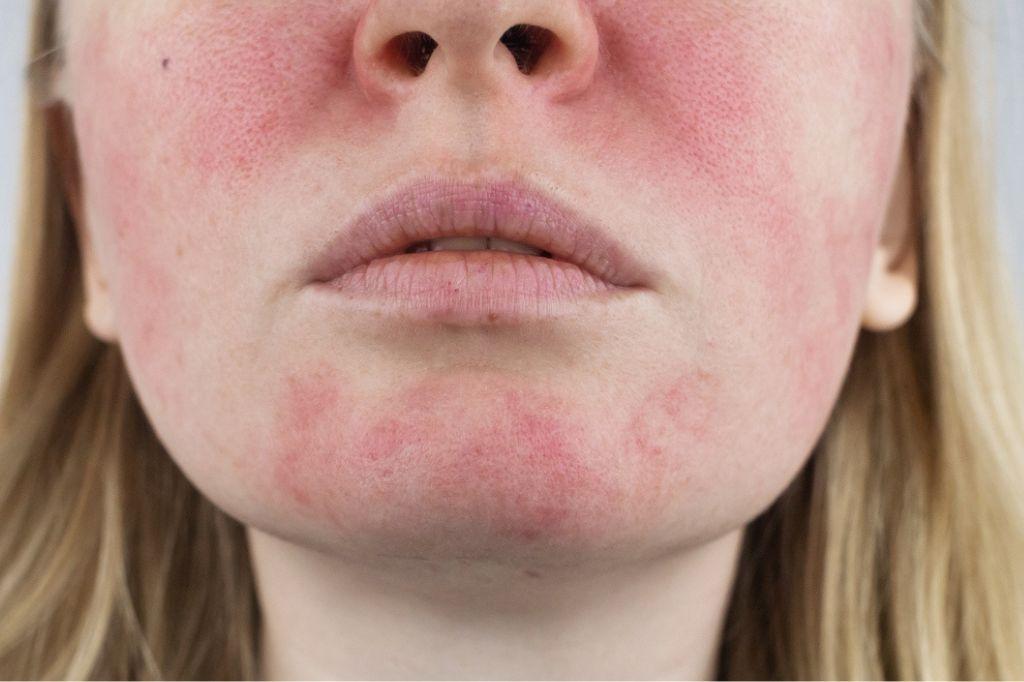7 Reasons Why Your Face Is Always Red
Do you often find yourself asking why your face is always red? Persistent facial redness can be frustrating and sometimes embarrassing. At Academic Alliance in Dermatology, we understand the concerns and confusion that come with this condition. Let’s explore seven common reasons why your face might always be red and how you can address them.

1. Rosacea
Rosacea is a chronic skin condition that causes redness and visible blood vessels in your face. It can also produce small, red, pus-filled bumps. Rosacea flare-ups can be triggered by various factors, including spicy foods, alcohol, sunlight, stress, and hot drinks.
What to do
While there is no cure for rosacea, managing triggers and using prescribed topical or oral treatments can help keep symptoms under control. Consult with a dermatologist for a personalized treatment plan.
2. Sun Exposure
Excessive exposure to the sun can cause your face to become red, especially if you have fair skin. Sunburn and long-term sun damage can lead to chronic redness and other skin issues.
What to do
Always apply a broad-spectrum sunscreen with an SPF of 30 or higher. Wear protective clothing and seek shade during peak sun hours. If sunburn occurs, use soothing aloe vera or over-the-counter sunburn relief products.
3. Allergies
Allergic reactions to skincare products, cosmetics, or environmental factors can cause redness and irritation on your face. Common allergens include fragrances, preservatives, and certain plant extracts.
What to do
Identify and avoid the allergens causing your reaction. Opt for hypoallergenic and fragrance-free products. Consult with a dermatologist to determine the specific cause and receive appropriate treatment.
4. Acne
Acne can cause redness, especially around active breakouts and inflamed areas. Post-inflammatory erythema (PIE) can also leave red marks on the skin after pimples have healed.
What to do
Use acne treatments recommended by your dermatologist, including topical retinoids, benzoyl peroxide, or salicylic acid. Avoid picking at acne to prevent further redness and scarring.
5. Sensitive Skin
People with sensitive skin often experience redness due to environmental factors, harsh skincare products, or even changes in temperature. Sensitive skin reacts more readily to irritants, leading to chronic redness.
What to do
Use gentle, fragrance-free skincare products formulated for sensitive skin. Avoid hot water and abrasive scrubs. A dermatologist can recommend products that soothe and protect your skin barrier.
6. Medical Conditions
Certain medical conditions, such as lupus, eczema, or seborrheic dermatitis, can cause chronic facial redness. These conditions often require specific treatments and ongoing management.
What to do
Seek medical advice if you suspect an underlying medical condition. A dermatologist can diagnose and provide treatment options to manage symptoms and reduce redness.
7. Lifestyle Factors
Factors such as diet, alcohol consumption, smoking, and stress can contribute to facial redness. Spicy foods, hot beverages, and stress can all cause your blood vessels to dilate, resulting in a flushed appearance.
What to do
Make lifestyle changes to reduce triggers. This might include modifying your diet, reducing alcohol intake, quitting smoking, and practicing stress-reducing activities like yoga or meditation.
Ready to Address Your Redness?
Persistent facial redness can be challenging, but understanding the cause is the first step toward effective treatment. At Academic Alliance in Dermatology, our experts can help you identify the reasons behind your redness and develop a customized treatment plan to restore your skin’s natural balance. Click here to contact us today.
